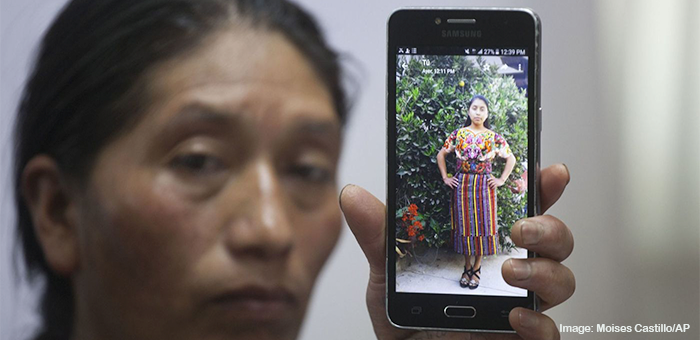Eyes on the Border: Keeping Families Together
The desperation, confusion, and fear heard in the recording of 10 Central American children separated from their families at the US-Mexican border have struck the nation to its core. Silenced by the government’s effort to deny wrongdoing, this first-hand recording amplifies the voices of these vulnerable children and exposes the devastating impact of inhumane and cruel institutional practices.
This recording comes just a month after a community member in Laredo,Texas utilized cell phone video to bring another voice to the forefront and demand accountability: that of 20-year-old Claudia Patricia Gómez González who was shot and killed by a Border Patrol agent.
Without that cell phone video, we may never have had the chance to learn about Claudia’s love for mathematics and making tortillas, and how her life was ended violently and unjustly. And without the audio recording, we may never have heard the pained voices of some of the over 2,300 children who have been separated from their parents and thrown into prison-like shelters since the Trump administration announced its new “zero tolerance” immigration policy in April.
In light of the government’s restrictive access to shelters— wherein only media and congress members are allowed to visit via supervised tours banning photography and interviews—the only way the public can get a glimpse of what’s going on is by viewing videos and photos released by Border Patrol. This recent audio recording helps to pierce the administration’s attempts to tightly control the narrative at the border, silence immigrant communities and outspoken criticism.
And while we’re grateful that the world is reacting with outrage to the horrific stories and images of families separated at the border, we hope the public continues to examine the practice of detaining and criminally prosecuting people for migrating and seeking asylum. Whether families are separated or detained together, no one should face criminal prosecution simply for seeking asylum or crossing a border. We must continue to advocate for positive change and support immigration rights, and not be distracted by a reactionary PR move from the administration.
Documentation of immigration abuses and the proliferation of stories from the ground can discredit the government’s false, incomplete, and tightly guarded narratives. From Senator Jeff Merkley Facebook livestreaming outside one of the children’s shelters as Homeland Security denied him entry, to cell phone video capturing Border Patrol’s cruelty and abuse, filming matters.
Stories matter. Visuals matter. So keep filming, keep fighting. Stay critical and stay safe. For guidance on using video to expose abuse and advocate for immigrant communities, visit our Eyes on ICE series.
- Tips for filming immigration agents safely, ethically and effectively (also available in Arabic, Haitian Creole, French, Spanish)
- Questions to ask yourself before you share a video of immigration agents (also available in Spanish and French)
- Using Facebook in an Era of Mass Deportation (also available in Spanish)
Photo Caption: Claudia Patricia Gómez González’s aunt, Dominga Vicente, shows a photo of her niece.

